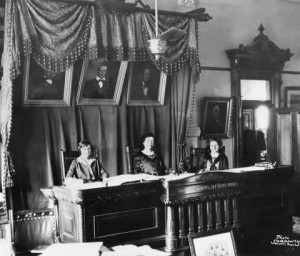In response to the shocking murders of several women in Cleveland, Ohio (see here), that city’s mayor appointed a Special Commission on Missing Persons and Sex Crime Investigations. That Committee has issued its final report here.
The Cleveland Plain Dealer summarized several of the key recommendations (here):
Recommended: Create a missing persons unit to analyze and distribute information. This would not add more investigators but should improve record keeping and sharing, and give families a contact person.
Currently: Patrol officers take initial reports and attempt to locate the missing person before passing cases to detectives in the five police districts. One officer in the departments downtown headquarters acts as a liaison. This would stay the same.
Recommended: Update the Sex Crimes/Child Abuse Units technology, such as cell phones, e-mail and electronic systems to track cases. The unit should relocate to a victim-friendly environment and private space should be created at police districts for victims to make reports.
Currently: The unit is located in dingy offices at Cleveland Police Headquarters. Parking is costly. Victims are often interviewed in the same space used to interrogate suspects. Officers do not have city-provided cell phones or e-mail. Cases are entered and updated in a handwritten logbook.
Recommended: City prosecutors with specialized training and detectives should collaborate on sexual assault cases from the start. The city should hire trained advocates.
Currently: In most cases, unit detectives consult with city prosecutors only when their investigations are finished. City prosecutors then decide whether the cases warrant charges or should go to the Cuyahoga County Prosecutor’s Office. Currently, less than 1/3 of all cases reported and investigated get prosecuted.
Recommended: Provide new or additional training for safety workers about victim sensitivity. Train department personnel to be courteous, friendly and professional. Specialized training is needed for responding to people, such as drug addicts, mentally ill.
Currently: Officers get limited training on victim trauma and crisis situations in the police academy. Yearly, officers receive up to 40 hours of training, sometimes by outside agencies, or seek additional training on their own.
The same paper has said (here) that, “History shows sexual-assault cases have not been a priority for Cleveland’s city leaders, law enforcement.”
-Bridget Crawford


 In response to the special financial challenges faced by women (live longer; earn less; take breaks from workplace) and recent research identifying characteristics of women that generally make them different investors with lower risk tolerances than men, a need has arisen for financial advice tailored specifically to women.
In response to the special financial challenges faced by women (live longer; earn less; take breaks from workplace) and recent research identifying characteristics of women that generally make them different investors with lower risk tolerances than men, a need has arisen for financial advice tailored specifically to women.  Cyra Akila Choudhury (FIU) has posted to SSRN her article
Cyra Akila Choudhury (FIU) has posted to SSRN her article  Frank Rudy Cooper (Suffolk) has posted to SSRN his working paper, “When Machismo Meets Post-Racialism: The Gates Controversy.” Here is the abstract:
Frank Rudy Cooper (Suffolk) has posted to SSRN his working paper, “When Machismo Meets Post-Racialism: The Gates Controversy.” Here is the abstract:
 Vice-President Biden announced yesterday that the Obama administration had withdrawn the Bush administration’s approach to Title IX. The White House website describes the action as follows:
Vice-President Biden announced yesterday that the Obama administration had withdrawn the Bush administration’s approach to Title IX. The White House website describes the action as follows: The New York Times reported today that Dorothy Height, Activist, Educator, Civil Rights Leader, and quintessential black feminist, has died at the age of 98. You can read the
The New York Times reported today that Dorothy Height, Activist, Educator, Civil Rights Leader, and quintessential black feminist, has died at the age of 98. You can read the  I’d like to invite readers to attend the
I’d like to invite readers to attend the 



 Felice Batlan (Chicago Kent) has posted to SSRN an
Felice Batlan (Chicago Kent) has posted to SSRN an 
 Leslie Rose (Golden Gate) has posted to SSRN her article,
Leslie Rose (Golden Gate) has posted to SSRN her article, 


 The Pace Law School faculty has recommended that the University President and Trustees grant tenure to Horace Anderson.
The Pace Law School faculty has recommended that the University President and Trustees grant tenure to Horace Anderson.